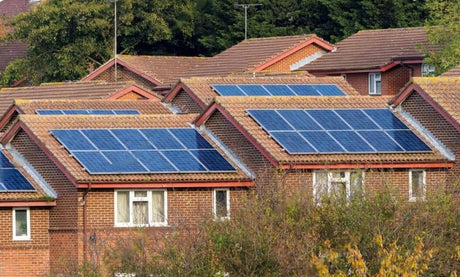Ever lived in the UK? You would know all about driving in winter and cold weather car issues.
While the crisp mornings and heavy snow make you excited for the season, it's undoubtedly a stressful time for car owners. Nothing is worse than rushing to work on an unpleasant cold morning, only to know your car won't start. Sadly, it is a reality for many drivers in winter, thanks to the British weather.
Cold weather can significantly impact your vehicle's function and your safety. So, let's find out why your car won't start in the cold and how to keep it in good condition in this chilly season. Follow some preventive measures to reduce the likelihood of an engine that won't turn over.
Reasons your car won't start in the cold
As the winter approaches, drivers must be mindful of how the cold can impact their driving and car operations. Otherwise, be ready to deal with hefty repairs, or even worse, an engine that doesn't turn over. Let's discuss in detail what may cause your car not to start in the cold.
1. Flat car battery

The most obvious reason your car won't start in the cold is a flat battery. A battery is supposed to power the engine and other electronic components like the lights, windscreen, and more.
When it's cold outside, the chemical reactions within the battery slow down, resulting in a current drop. Eventually, the battery struggles to provide enough power to the components that start the engine, including the fuel pump, spark plugs, and starter motor.
Plus, if the battery is already weak, faulty, or undercharged, it fails to provide energy to any components and prevents your vehicle from starting. But how to know if this is the case? Let's walk through a few symptoms of a flat battery.
- Fainting or whining ignition sound.
- Dashboard lights struggling to turn on.
- Your car electrics are working fine but the starter motor sounds abnormal.
Our driving habits, especially during cold, can amplify the battery drainage. Using heaters, windscreen wipers, and full beams can cause a great deal of damage. Here are some things to help you prevent a flat battery.
- Park your car in a sheltered space, preferably a garage.
- Turn off the electronics while you are not driving.
- Avoid frequent short trips. If you still need to take these drives, charge the battery at least once a week.
2. Faulty alternator
You have bought a new battery yet it still goes flat? The culprit might be the faulty alternator. Think of an alternator as your car's lifeline. It keeps your vehicle charged while the engine is running.
Another way of identifying a faulty alternator is a car that dies quickly after being jump-started. Like a starter motor, the alternator is deep inside the engine. So, you might want to consult a technician for replacement or repairs.
3. Problems with the fuel system
The car's fuel lines become contaminated with water over time, and it's normal. But, the problem occurs when the cold hits and the water freezes in the already narrow lines. As the fuel gets blocked by the ice, it does not reach the engine, and your car struggles to start.
Even if you get the car started somehow, you will eventually encounter issues like juddering, jerking, or having a sputtering sound while accelerating.
Now, coming to the solution! You can find locally available additives to reduce water contamination in the fuel system. However, in severe cases, it is better to get professional help for flushing or replacement.
4. Wrong oil
Using your regular engine oil in winter can also behind your car not to start. This is because car oils thicken in cold, and make it hard for the engine to turn over. But, no worries! Using an oil thinner during winter months would do the job.
What should I do if my car battery dies?
Dealing with a flat battery and an engine that doesn't turn over in already cold weather is frustrating. Let's discuss a few things you can do if your car battery dies.
The best way out is jump-starting your car. For this, get a set of jump leads and another working vehicle. Connect the two cars, and be careful. Start with the red cable on the positive terminals of the batteries, followed by the negative terminal of the healthy battery to a bare-metal grounding point on the car you want to jump-start.
What if you do not have another vehicle with a healthy battery? Don't stress. You can always use a battery charger or a jump pack in emergencies. But if that won't work, the only option left is to contact your breakdown cover for recovery and repairs.
- Please note that traditional lead-acid batteries do not discharge very far and can easily be damaged if left uncharged for too long.
And, if your battery still shows signs of inadequate power after jump-starting, it definitely needs a replacement.
My car won't start but the battery is good

If you have tried jump-starting and your car still won't start, know that the problem is bigger than a flat battery. Immediately stop the ignition, as it can overheat your starter. Now, let's discuss some potential reasons why your car won't start even if the battery is good and working.
Ignition issues
If your battery is working fine but you can't seem to turn the key in the ignition, a jammed steering lock might be the culprit. It usually occurs when a wheel presses hard against the curb or you lock it while parking. Plus, a problematic ignition switch can also be why your car won't start in the cold. One way of identifying it is a clicking sound coming from the engine.
Starter motor issues
Your battery's not flat but the car still won't start? Chances are, it might be a faulty starter motor. The starter motor spins the engine and gets the car started using power from the battery. The good part is that modern vehicles have a stop-start system to make the setup economical and avoid such issues. Still, failures are unexpected.
To diagnose a faulty starter motor, look for a clicking sound from the engine. Additionally, the car having some power to run electrics but won't start is also a sign. If you are confident about the starter motor causing this issue, consult a professional and get it replaced by a service center.
Clogged fuel filter
The dirt particles in your fuel filter can clog it and prevent the fuel from going to the injectors. When completely jammed, it prevents your engine from turning over. To diagnose it, shake your fuel filter and power liquid from both sides. If you see a clean liquid coming from one side and a black one from the other side, immediately clean the filter.
Blown fuse
If your car has some power but not enough to start the engine, most people would directly jump to inspect the battery. But, it can also be a blown fuse. In such a case, examine the fuse box and test it with a voltmeter. You can get a new fuse from a local accessory store and replace it yourself.
Faulty spark plugs
Faulty spark plugs are yet another common reason why your car won't start in cold. This usually happens when the driver turns off the engine too soon after being started from cold. The unburned fuel left in the system enters the engine, remains there for some time, and wets the spark plugs, making it hard to restart the vehicle.
Final thoughts
Chilly weather can play with your car's fuel system, battery efficiency, and other engine components. On top of that, finding out why your car won't start in cold and the forces at play is another challenge. However, with the right diagnosis and solution, you can get a headstart.
Start by inspecting the battery, and if this is not the case, it's most likely the engine components. Once confident about the underlying issue, approach the right solution.
That said, prevention is always better than cure. Do routine car maintenance to avoid the likelihood of cold weather car issues from the start.










